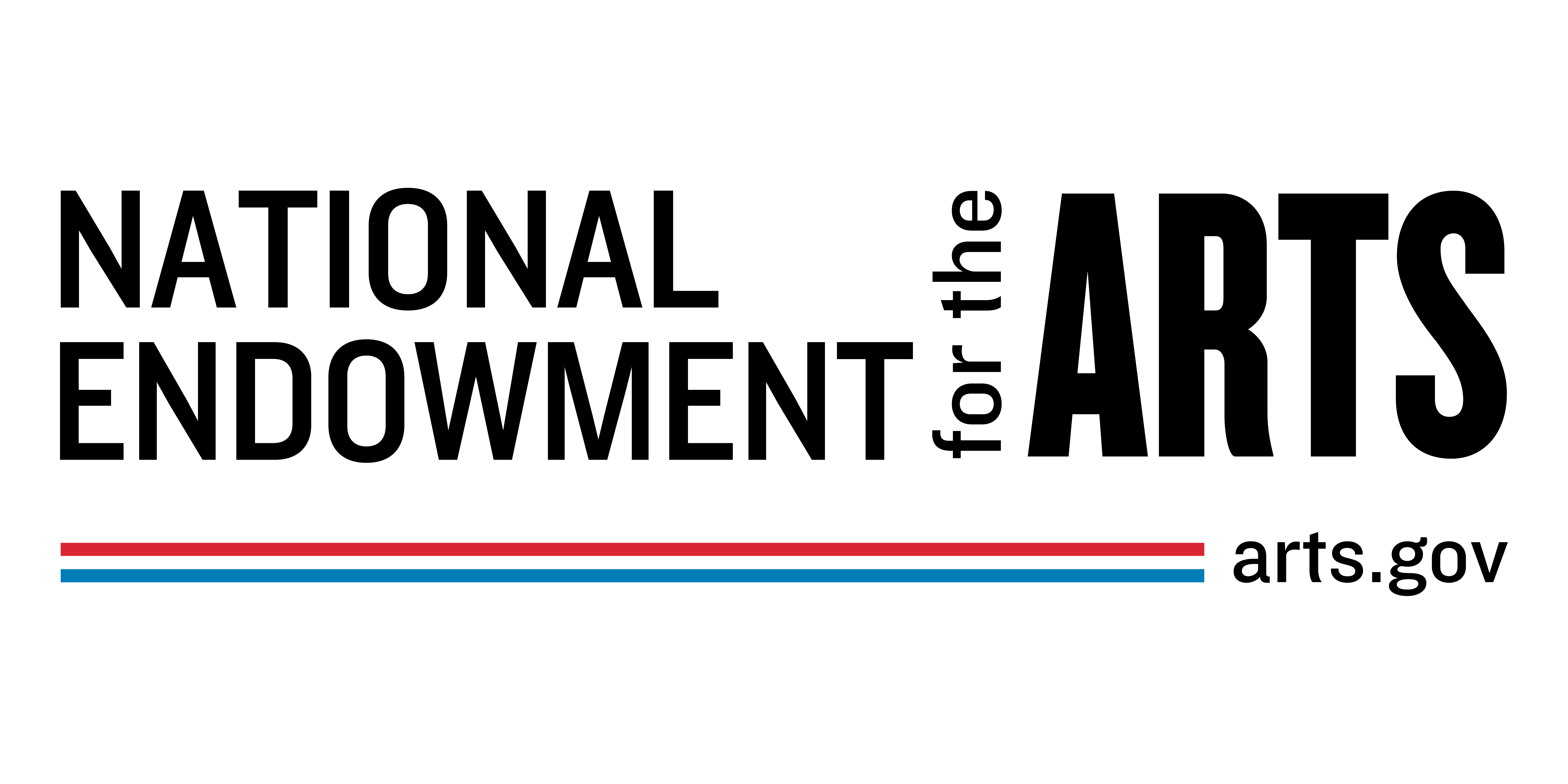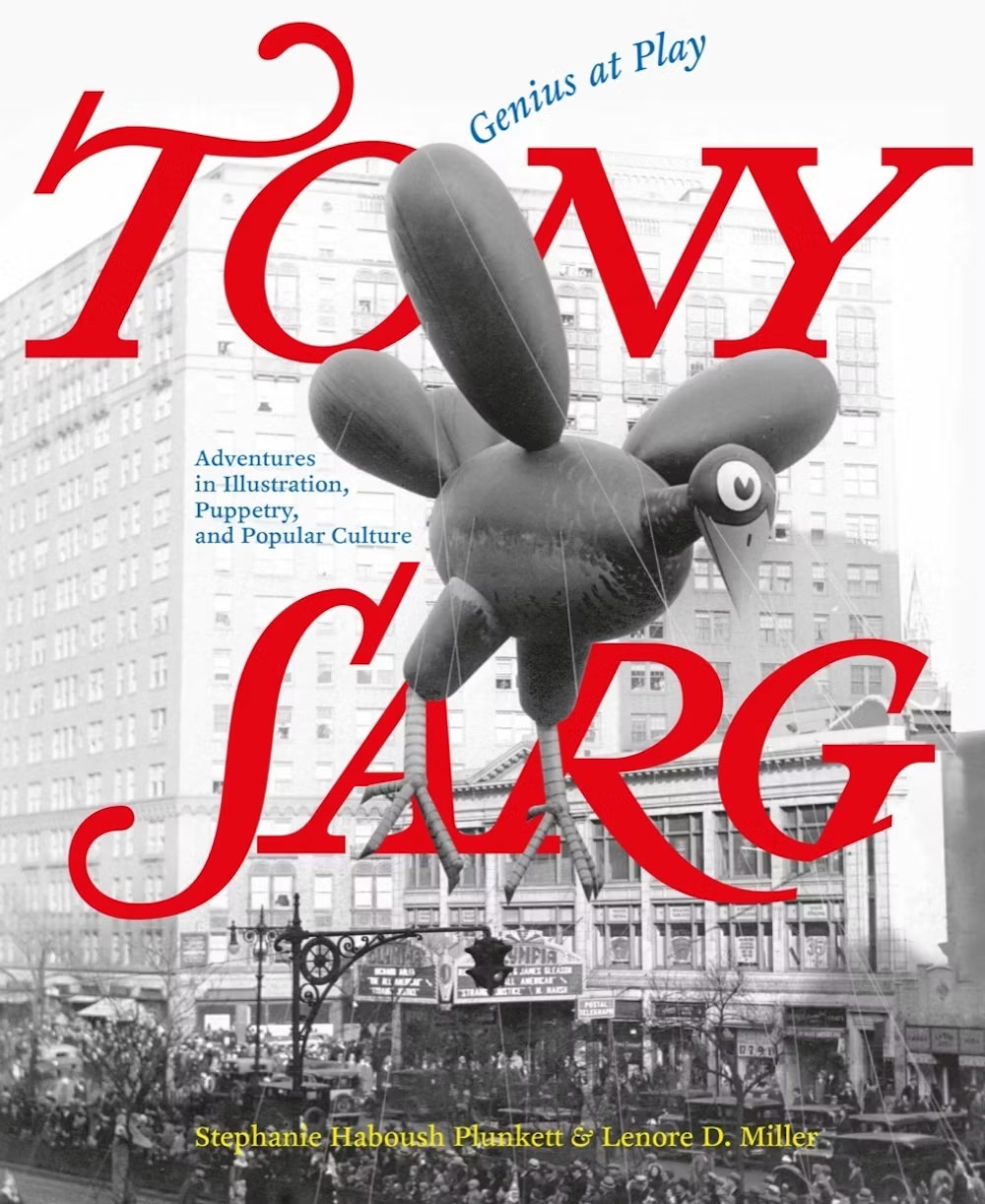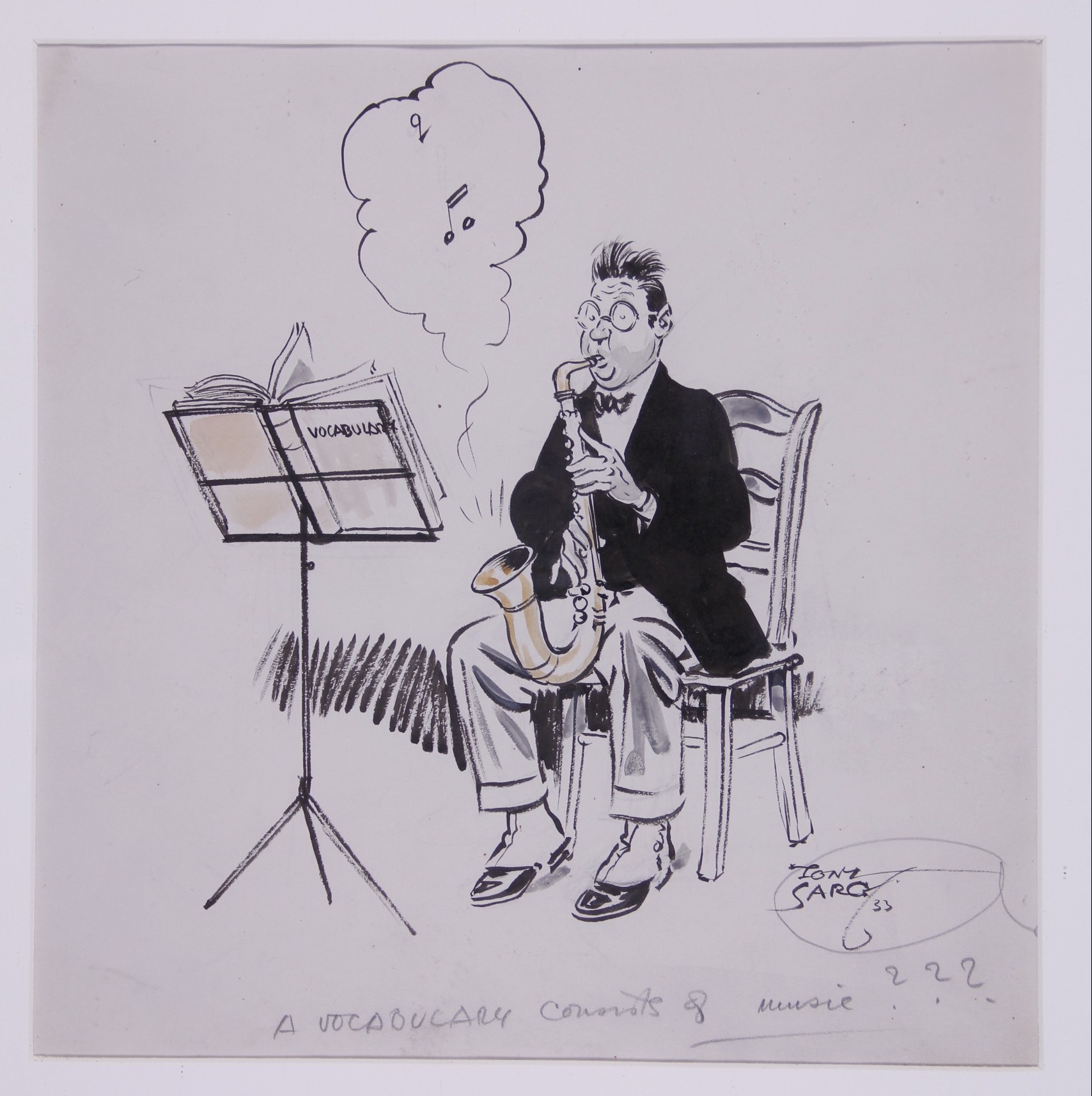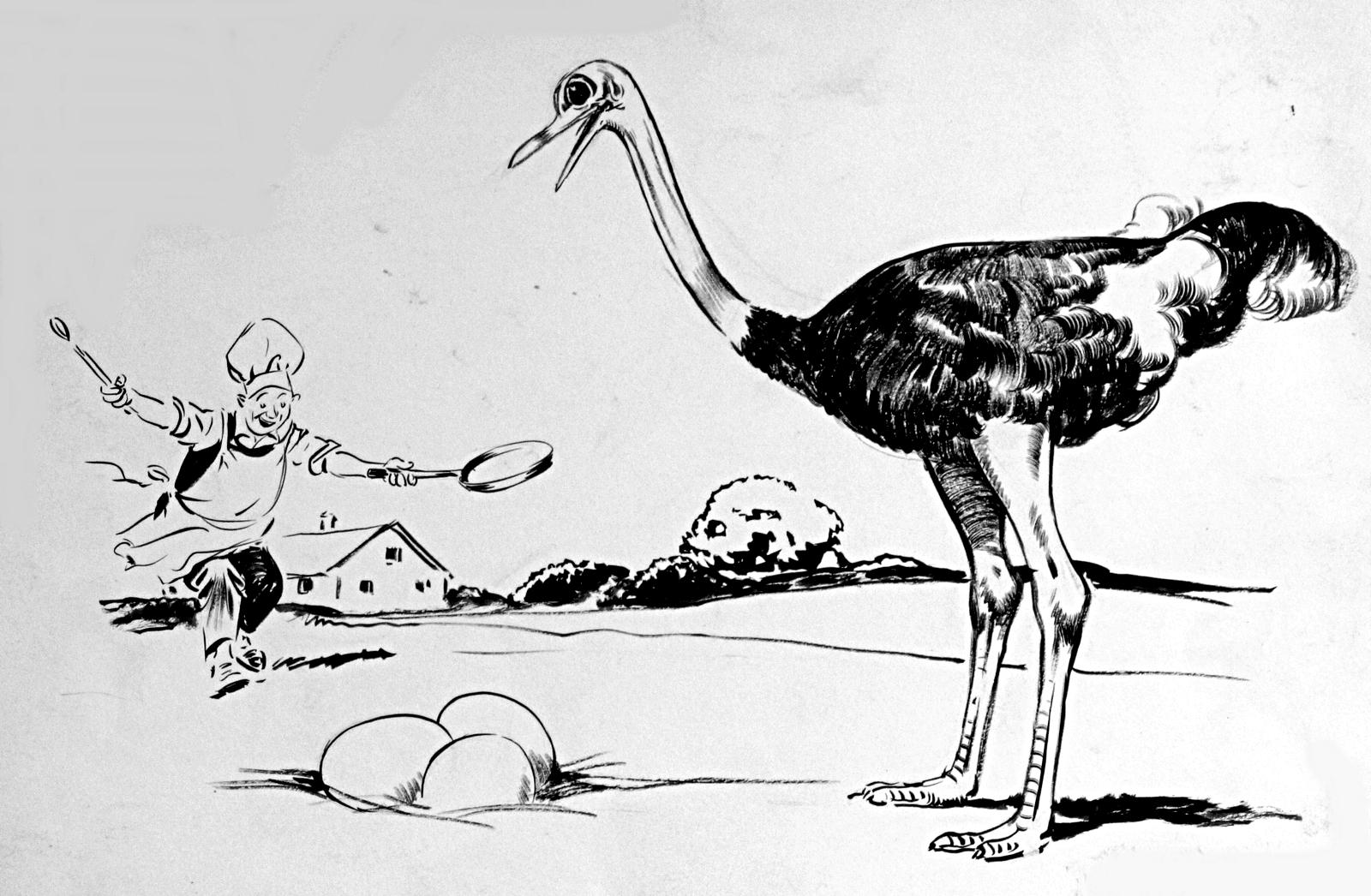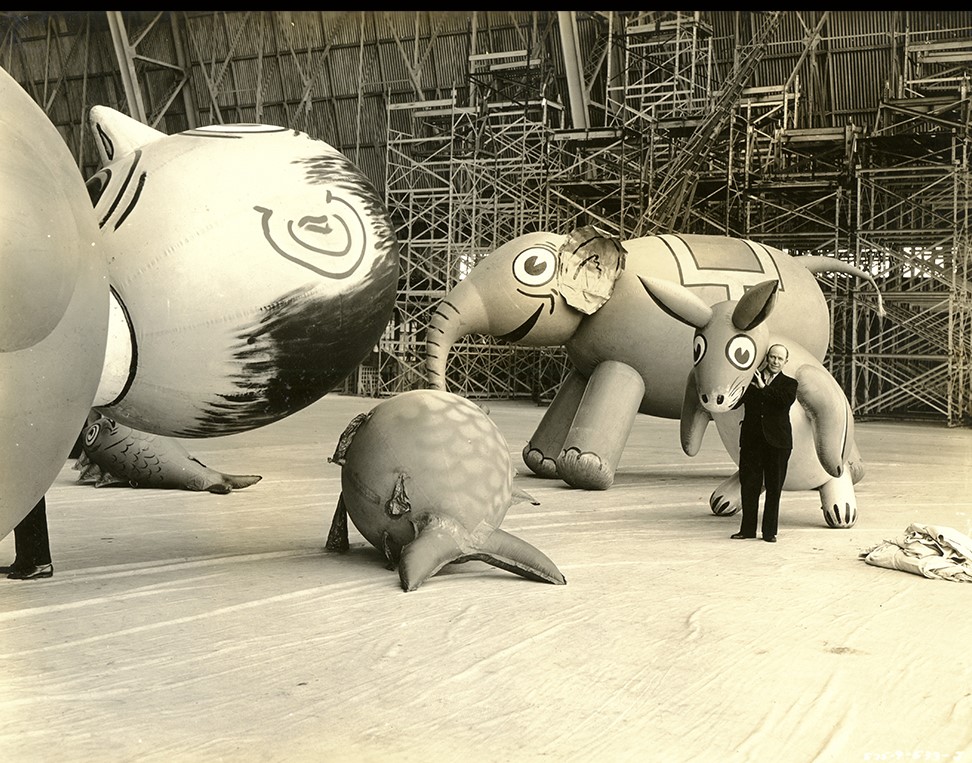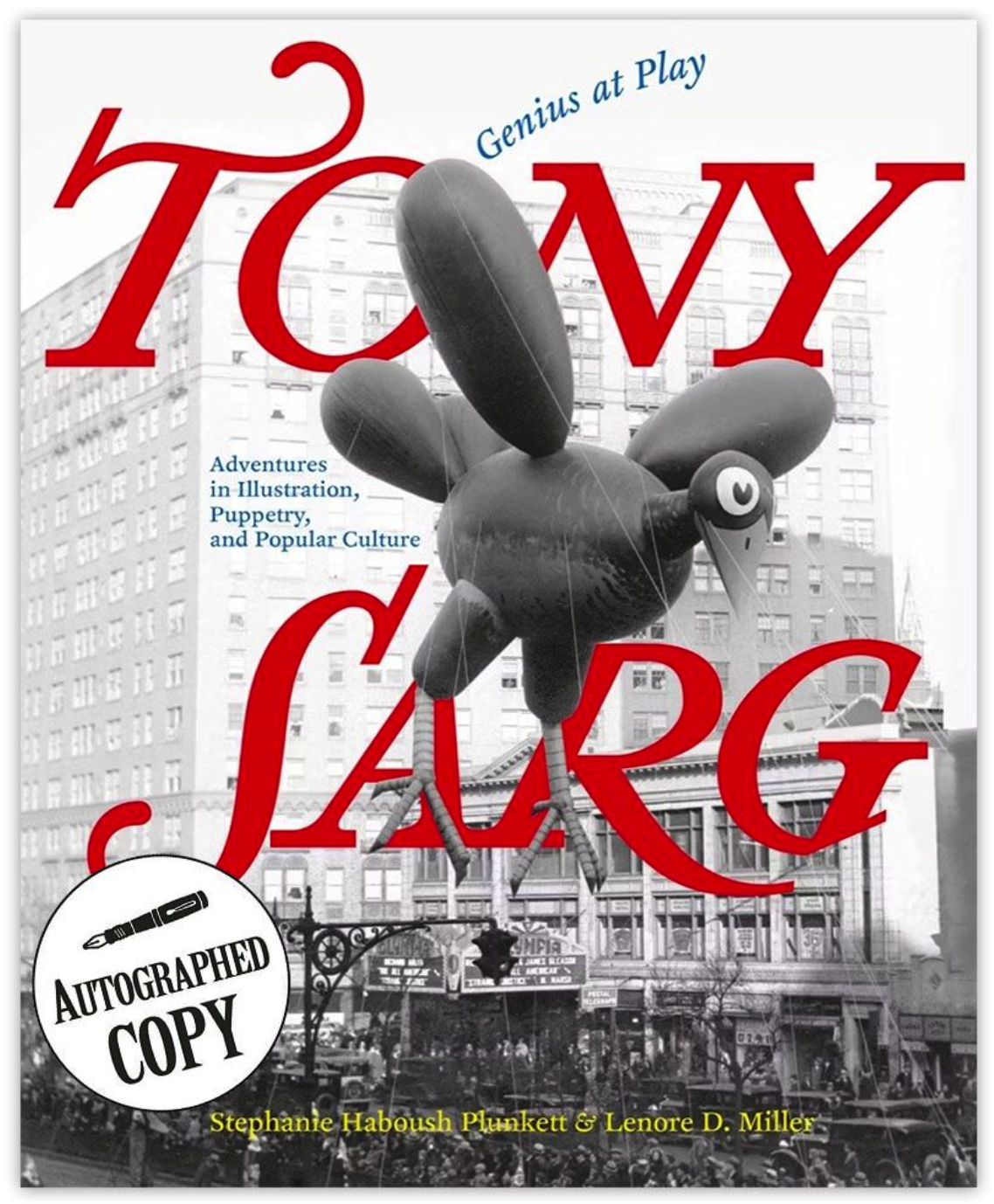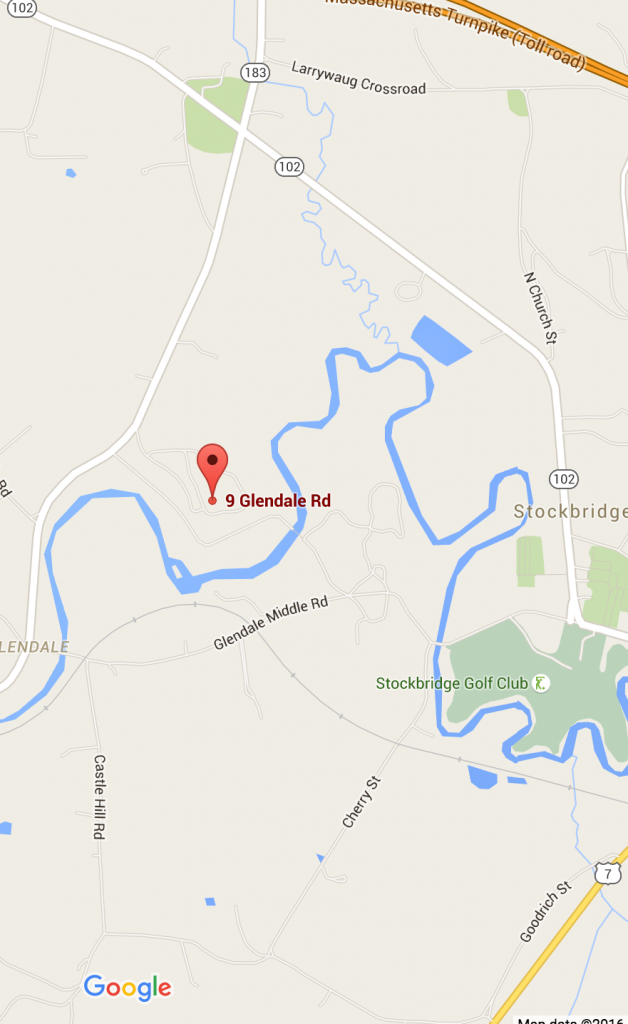TONY SARG: GENIUS AT PLAY
Adventures in Illustration, Puppetry, and American Popular Culture
This exhibition is organized by the Norman Rockwell Museum and supported, in part, with generous funding from the
June 10 through November 5, 2023
Tony Sarg: Genius at Play is the first comprehensive exhibition exploring the life, art, and adventures of Tony Sarg (1880-1942), the charismatic illustrator, animator, puppeteer, designer, entrepreneur, and showman who is celebrated as thefather of modern puppetry in North America. His vast knowledge of puppet technology was instrumental in his design of the inaugural Thanksgiving Day parade balloon for Macy’s Department Store in 1927, as well as subsequent parade balloons and automated displays for the company’s festive holiday windows, which were imitated nationwide. The creator of a host of popular consumer goods, from toys and clothing to home décor, Sarg also envisioned fanciful illustrated maps and created mural designs for the Oasis Cafe in New York’s Waldorf Astoria Hotel.
Tony Sarg (1880 – 1942)
Photographer Unknown
Tony Sarg’s Turkey Gobbler Balloon, Macy’s Thanksgiving Day Parade, 1929
Photograph
Collection of the Nantucket Historical Association
Slider Image:
Photographer Unknown
Tony Sarg’s Sky Elephant Balloon, Macy’s Thanksgiving Day Parade, 1928
Photograph
Collection of the Nantucket Historical Association
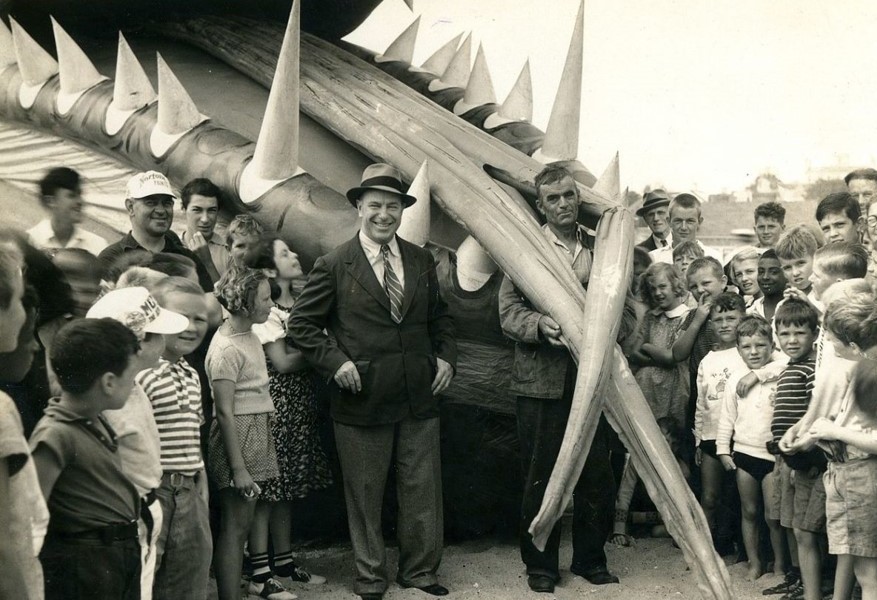
Tony Sarg (1880 – 1942)
Photographer Unknown
Tony Sarg with Nantucket Sea-Serpent and Children on Beach, Nantucket Sea-Serpent Hoax, 1937
Photograph
Collection of the Nantucket Historical Association
Drawing from public and private collections of art and material culture, the exhibition features original illustrations, marionettes, animations, interactive elements, and ephemera, including stage sets, illustrated books, commercial products, and archival photographs. Exploring themes relating to Sarg’s prolific career and ongoing influence, this theatrical installation serves as a window into the creative process and achievements of an exceptional American artist and showman. Celebrating Sarg’s infamous 1937 Nantucket Sea Monster Hoax, a thirty-foot inflatable balloon will greet visitors upon their arrival, and a richly illustrated catalogue will accompany the exhibition.
Exhibition Themes Include:
- London to New York: Sarg as Illustrator
- Moving Images: Sarg’s Animations
- Balloons Over Broadway: Macy’s on Parade
- Puppets on Tour: Sarg’s Marionettes
- Humor, Fantasy, and the Turning Page
- The Big Stage: Illustrated Maps, Architectural Projects, and Two World’s Fairs
- Whimsical Art for Commerce
- Sarg’s Nantucket Adventures
- The Artist’s Legacy
About the Artist
A German-American illustrator, puppeteer, author, designer, entrepreneur, and practical joker, Tony Sarg was born in Guatemala in 1880, the son of German diplomat and coffee entrepreneur, Francis Charles Sarg, and a British mother, Mary Elizabeth Parker. His paternal grandmother, Mary Ellen Best, was a gifted watercolorist. It is believed that the young Sarg, at the age of six, first tinkered with a mechanical invention to remotely feed the family’s chickens for his father. Surrounded by puppets as a child, he was also the inheritor of his grandmother’s beloved toy collection and developed a fascination for creating and performing with marionettes.
When Sarg’s family returned to Germany in 1887, he entered a military academy at age 14 and, three years later, received a commission as lieutenant⸺a post that he resigned in1905 to move to the United Kingdom in pursuit of artistic opportunities. While still in Germany, Sarg met Bertha Eleanor McGowan, an American tourist from Cincinnati, Ohio. Continuing his relationship with her while in the United Kingdom, he married McGowan in 1909, and the couple returned to England where their daughter, Mary, was born in 1914. His German heritage and anti-German sentiment in England leading up to World War I prompted Sarg to move his family to New York City, and in 1920, he became a naturalized United States citizen.
IMAGES
MEDIA
EXHIBITION VIDEO
Co-Curators: Stephanie Haboush Plunkett, Deputy Director/Chief Curator, Norman Rockwell Museum & Lenore D. Miller, Curator Emerita, George Washington University Museum
Art Historians: John Bell, Ph.D., Director, Ballard Institute & Museum of Puppetry; Darin E. Johnson, Founder, CEO, Artistic Director, American Theater for Puppetry Arts; Michael Harrison, Obed Macy Research Chair, Nantucket Historical Association; Niles Parker, Executive Director, Nantucket Historical Association; George Korn, Art Collector/Exhibit Advisor
Tony Sarg – “Noah Put the Cat Out” (1922)
Tony Sarg’s Almanac – The First Circus essential excerpt, 1921
The Gifts of Tony Sarg | American Experience | PBS
Tony Sarg’s Sea Monster on Nantucket, 1937 – NHA Research Library Film Collection
Louis Henry Mitchell – Macy’s Thanksgiving Day Parade
PRESS
TIMES UNION
Puppeteer of Macy’s Parade fame gets due at Rockwell Museum
Don’t be alarmed by the 30-foot sea monster outside of the Norman Rockwell Museum — it’s the new, inflatable staff member greeting visitors coming to explore the museum’s latest exhibit, “Tony Sarg: Genius at Play.” The museum is showcasing the largest exhibition of Tony Sarg, an illustrator, puppet master, pioneer in animated films and the designer of the first Macy’s Thanksgiving Day Parade balloon, on display through Nov. 5.
PRESS RELEASE
opens June 10, 2023
STOCKBRIDGE, MA– Norman Rockwell Museum presents Tony Sarg: Genius at Play is the first comprehensive exhibition exploring the life, art, and adventures of Tony Sarg (1880-1942), the charismatic illustrator, animator, puppeteer, designer, entrepreneur, and showman who is celebrated as the father of modern puppetry in North America and the originator of the iconic Macy’s Thanksgiving Day parade balloons, floats, and animated store windows. On view from June 10 through November 5, 2023, this new exhibition will present original illustrations, marionettes, animations, interactive elements, and ephemera, including stage sets, illustrated books, commercial products, and archival photographs.
RELATED EVENTS
VENUE(S)
Norman Rockwell Museum, Stockbridge, MA, June 10 to November 5, 2023
Nantucket Historical Association, Summer 2024, Nantucket, MA
DIRECTIONS
Norman Rockwell Museum
9 Glendale Road Route 183
Stockbridge, MA 01262
413-931-2221
Download a Printable version of Driving Directions (acrobat PDF).
Important note: Many GPS and online maps do not accurately place Norman Rockwell Museum*. Please use the directions provided here and this map image for reference. Google Maps & Directions are correct! http://maps.google.com/
* Please help us inform the mapping service companies that incorrectly locate the Museum; let your GPS or online provider know and/or advise our Visitor Services office which source provided faulty directions.



